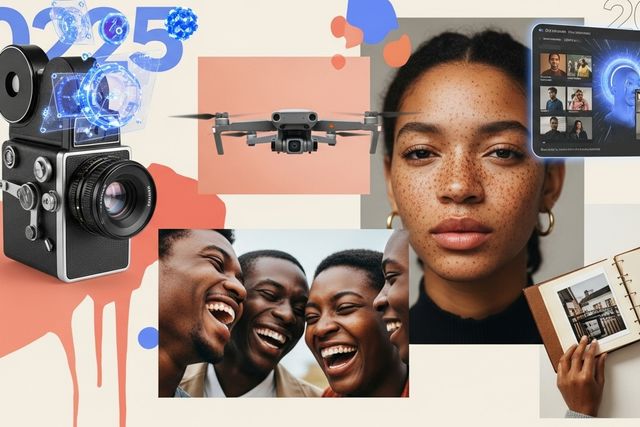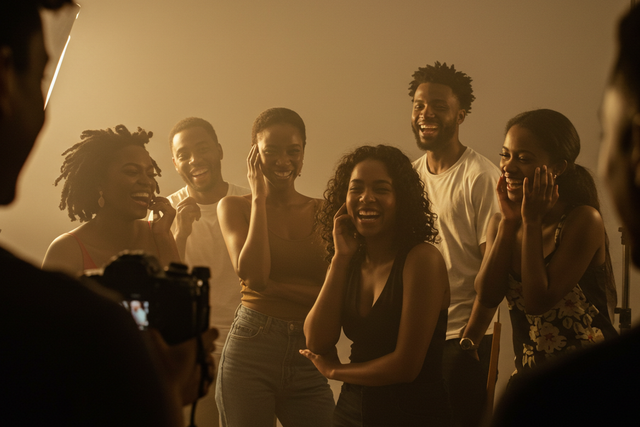
The Best Times to Shoot Outdoors
Outdoor photography can be a game-changer when you get the timing right. Understanding natural light and how it changes throughout the day is vital when photographing beautiful scenery or candid situations. The right light can enhance colours, add depth, and bring out the beauty of your subjects. In this article, we’re diving deep into the best times to shoot outdoors, focusing on natural light and how to make the most of it.
You might have heard that "timing is everything" in photography, and it’s true! So, let's explore how to harness the different types of natural light, from the much-loved golden hour to the cool and moody blue hour and even the more challenging midday sun.
Why Natural Light Matters in Photography
Before we get into the nitty-gritty of when to shoot, let’s talk about why natural light is so important. Natural light has a dynamic quality that artificial lighting can’t always replicate. It’s softer, more flattering, and - when used correctly - can elevate your photos to a professional level. It also varies throughout the day, which means that learning how to shoot in different lighting conditions gives you a versatile toolkit as a photographer.
Golden Hour: The Most Magical Time to Shoot Outdoors
What is the Golden Hour?
If you’ve ever seen those warm, soft, and dreamy photos, chances are they were taken during golden hour. This refers to the time just after sunrise and just before sunset when the sun is low in the sky. The light during golden hour is soft and diffused, casting long shadows and giving a golden glow that’s incredibly flattering for portraits and landscapes.
Golden hour lighting is ideal because it avoids the harshness of direct sunlight, offering a softer, more balanced light. It’s nature’s very own filter, making skin tones look smooth and colours pop without the need for post-processing.
Why You Should Love Golden Hour for Photography
- Soft Light for Portraits: Golden hour is famous for flattering portraits. The warm glow reduces harsh shadows, giving skin a beautiful, natural radiance.
- Beautiful Colours: During golden hour, the sky takes on hues of pink, orange, and purple, adding stunning backdrops to your outdoor shots.
- Longer Shadows: Long, soft shadows help add depth and dimension to your photos. This works particularly well in landscapes where you want to highlight textures.
- Low Contrast: The diffused light helps avoid extreme contrast between highlights and shadows, making it easier to capture details.
How to Maximize Golden Hour Photography
Since golden hour doesn’t last very long (typically an hour or less depending on your location), it’s essential to be well-prepared. Here are some tips to make the most of it:
- Use Apps to Track Golden Hour: Apps like SunCalc or PhotoPills can help you determine exactly when golden hour starts and ends based on your location.
- Scout Your Location: Plan your shoot location ahead of time. Whether you’re photographing people or landscapes, being ready before the light hits is key.
- Set Your Camera Settings in Advance: Have your camera ready with the right settings, so you’re not fumbling with adjustments while the light is fading.
- Shoot Fast, Adjust Later: During golden hour, the light changes quickly. Take as many photos as possible and make fine adjustments in post-processing.
Blue Hour: The Mysterious Twilight Photography
What is Blue Hour?
Right after the sun has dipped below the horizon or just before it rises, you’ll experience the blue hour. The name comes from the deep blue hues that fill the sky. This lighting is cooler and moodier compared to golden hour, making it perfect for adding a cinematic feel to your shots.
Why Blue Hour is Great for Photography
- Moody Atmosphere: Blue hour creates a soft, twilight atmosphere that’s perfect for adding mystery or drama to your images.
- Ideal for Landscapes and Cityscapes: The cool tones of blue hour work well with city lights and reflections, giving your images a moody yet magical feel.
- Soft, Even Lighting: The light is more diffused, creating an even exposure across your image.
How to Make the Most of Blue Hour
- Use a Tripod: Since blue hour is a low-light condition, using a tripod will help you avoid camera shake, especially if you’re using a slow shutter speed.
- Experiment with Long Exposures: Blue hour is an excellent time to play with long exposure photography, especially in urban settings where you can capture light trails from cars.
- ISO and Aperture Settings: Lower the ISO to reduce noise, and use a wider aperture to let in more light without compromising sharpness.
Midday Sun: Challenging, But Not Impossible
Why Midday Sun Can Be Difficult
The midday sun gets a bad rap, and for good reason - it’s harsh, direct, and can create unwanted shadows. Shooting at noon is usually less than ideal for outdoor photography because the sun is directly overhead, leading to blown-out highlights and deep, unflattering shadows, especially on faces.
However, shooting in harsh light isn’t impossible. In fact, mastering it can open up new creative possibilities.
How to Overcome Harsh Midday Light
- Use Shade: Find shaded areas to diffuse the harsh light. Trees, buildings, and even umbrellas can act as natural diffusers.
- Backlighting Your Subject: Position the sun behind your subject to avoid harsh shadows on their face. You can use a reflector to bounce light back onto their face for a soft glow.
- Use a Diffuser or Reflector: These tools soften harsh sunlight and help balance exposure across the photo.
- Adjust Your Camera Settings: Lower your ISO, use a faster shutter speed, and close down your aperture to prevent overexposure.
Why Shooting in Midday Sun Can Be Worth It
- Vibrant Colours: The bright light can actually bring out rich, saturated colours, especially in nature photography.
- Strong Contrast: While contrast can be a challenge, it can also add drama and interest to certain types of photos, like architectural shots or high-contrast street photography.
How to Adapt to Changing Light Conditions Outdoors
Golden Hour vs. Blue Hour vs. Midday Sun
- Golden Hour: Warm, soft light ideal for portraits and landscapes.
- Blue Hour: Cooler, moodier light for cinematic or twilight shots.
- Midday Sun: Harsh and direct but great for strong contrast and vibrant colours when managed well.
Planning Ahead is Key
No matter which time of day you’re shooting, planning is critical. Scouting locations and setting up before the perfect light hits is essential for capturing the best images. Bring the right tools - such as reflectors, diffusers, and tripods - to maximize your chances of getting the shot.
Bonus Tips for Shooting Outdoors at Different Times of Day
Early Morning Photography
If you’re an early bird, shooting just after sunrise can offer similar benefits to golden hour. The light is soft, and there’s often less foot traffic in popular locations, giving you more creative freedom to compose your shots without distractions.
Late Afternoon and Pre-Sunset
Pre-sunset is another excellent time for outdoor photography. The lighting conditions are similar to golden hour, but you’ll have a bit more time to work with the light as it transitions into golden hour.
Cloudy Days
Overcast skies create diffused, even light, which is perfect for portrait photography. The clouds act like a giant softbox, eliminating harsh shadows and highlights. It’s also a great time to experiment with black-and-white photography since the even light can enhance the contrasts without overwhelming the scene.
Conclusion: Finding Your Perfect Outdoor Photography Time
In the world of photography, natural light is your best friend—when you know how to use it. Understanding how light influences your images may significantly improve your skills, whether you're shooting during the lovely warmth of golden hour, the dark ambiance of blue hour, or even the harsh midday sun.
To recap:
- Golden Hour is ideal for soft, flattering portraits and vibrant landscapes.
- Blue Hour is perfect for adding a moody, cinematic feel to your shots.
- Midday Sun can be difficult but offers great opportunities for bold, vibrant photography when managed correctly.
At the end of the day, the best time to shoot outdoors depends on your subject, the mood you want to create, and your technical skills in managing light. Practice shooting in all conditions, and soon enough, you’ll be able to capture stunning photos no matter the time of day.
So, next time you plan an outdoor shoot, be mindful of the natural light. Timing really is everything!
Anonymous
Related Posts

2025 Photography Trends That Will Make You Grab Your Camera
Okay, confession time: I almost cried when a teenager asked me not to edit out her freckles. That's when I knew 2025's photography trends were something special. This isn't just about new techniques - it's about falling back in love with what makes us human.

How to Pose Naturally for Photos (No Awkward Smiles, I Promise!)
Ever stood frozen in front of a camera, smiling so hard your cheeks hurt? Let’s fix that – natural posing isn’t about perfect angles, but about moving like nobody’s watching (even when they totally are).